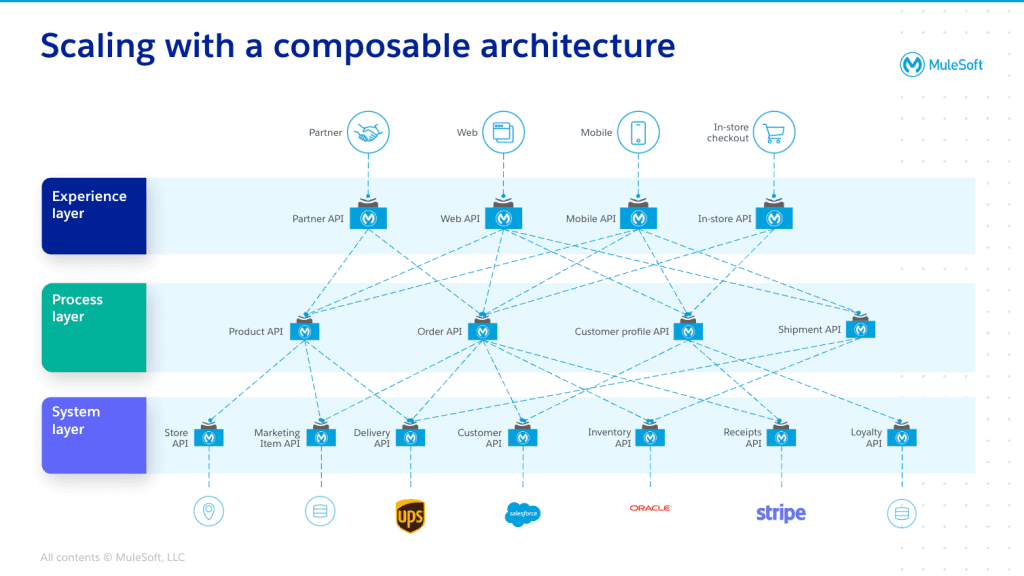Unleashing Digital Transformation with MuleSoft

Written by Harini Krishnamurthy
Content Writer
May 1, 2023
Discover How Integration is Driving Innovation Across the Globe
Organizations’ implementation of new digital technologies has caused many changes, leading to digital transformation. This new form of organizational transformation significantly impacts many different aspects. For example, the Internet of things (IoT), social media, cloud computing, data analytics, and other digital technologies have transformed operational processes, value creation, and customer experience. Therefore, in today’s digital era, organizations should consider their IT strategy not as a functional level strategy but as a part of business level strategy resulting in digital transformation.
Now that digital transformation acts as a catalyst in every organization, how can MuleSoft empower organizations to automate, integrate and connect different applications? A tool (MuleSoft) that supports not only IT but also business teams, so businesses should not have any dependency. An important ingredient to deliver on business objectives is integrating or unifying multiple systems so data can be shared as quickly and efficiently as possible. As the organization excels, these connections multiply, and traditional point-to-point connections only get messier.
In addition, customer expectations for a seamless user experience are increasing quickly, and employees expect tools to be fast, easy, and business savvy. It means no matter which department you belong to, IT or Business, every role’s ultimate objective is to streamline a system that works effectively in the organizational ecosystem and matches your growth strategies.
For every organization, there are different parameters of Digital Transformation; however, at Royal Cyber, we will draw your focus on democratizing data, streamlining and modernizing the deployment strategy, and integration using API.
Want to build an API product strategy that is declared a winner? Read our blog where we tell you how.
Democratizing Data
With an ever-growing number of APIs, databases, and applications to interact with, and an ever-growing number of consumers that needs to access data from them. Organizations realize the innovative way to streamline the consumption of all these new data sources. So, how do we do that? How do we provide access to such data? This is where Graph QL comes into play. Graph QL is the evolution of consumption from a composable architecture.

Using a Graph QL, you can easily unify a massive number of APIs into a single endpoint governed by a unified schema. This unified schema allows consumers to request data from any field within any of the associated APIs. This means that actions that usually take 5, 10, or maybe even 20 different queries can now be done in just one. So, with MuleSoft, they have its own version of a Graph QL solution called Anypoint DataGraph. Anypoint DataGraph helps developers go faster while reducing the burden on the IT and operations team. Developers no longer need to build low-value APIs that join data from other existing APIs. Instead, they can focus on building actual application logic.
Watch our video where our experts discuss how you can unleash the potential of Anypoint Datagraph.
Additionally, IT and Operations teams have fewer APIs to manage and secure because a single endpoint created with Anypoint DataGraph runs as a SaaS application with no maintenance or patching required. In Anypoint DataGraph, three key highlighting features will be part of the new release, which will be used to deploy DataGraph faster and more securely than ever. The first one is Graph QL Federation which can add existing Graph QL APIs to the unified schema. This allows you to create graphs of graphs, also known as super graphs. With Graph QL federation, MuleSoft provides more flexibility by allowing you to federate both REST and Graph QL APIs and unlocking new efficiencies when you make downstream queries. The second is the ability to deploy Anypoint DataGraph on Runtime Fabric, which allows you to bring it into your private data center or any cloud vendor you might be using. This allows the organization to choose where and how to create DataGraph. Finally, the feature DataGraph Views, With the release of views, Organizations will get complete control over who gets access to what field of your DataGraph. This allows organizations to construct a layer of enhanced security over Graph QL APIs while providing a backend for the front end.
Streamline and Modernize Deployment
For the deployment, let us look closely at CloudHub 2.0 and why it is important. CloudHub 2.0 is more than just a simple iteration of the existing CloudHub. It leverages an orchestrated container platform and service-oriented architecture. Every single application will be deployed as a stateless lightweight container that can scale up and down more efficiently and faster. Replicas of the same application will be automatically deployed across multiple availability zones. Like existing CloudHub, organizations still have the magical experience of having application up and running in under 30 seconds and accessing monitoring dashboard logs and other runtime platform services out of the box.
Watch our video where we discuss CloudHub 2.0 and what to expect.

Integrations Using APIs
At Royal Cyber, we are a System integrator. We are known to deliver many complex and result-oriented use cases with several underline systems involved, such as CRM, ERP, Manufacturing systems, Banking platforms, Location-based systems, Retail systems, etc. Organizations need integrations in many ways, one of them being API-Led Connectivity. Organizations also require different packaging products in APIs to facilitate self-service IT and increase innovation.
Summary
For all that, Royal Cyber takes different integration techniques. A big bang approach requires all systems to be integrated at once—integrations with the stream, which means integrating systems project by project basis. Integration can also be done on an incremental basis, including business priorities for integrating multiple systems—lastly, the Top-down approach includes integration per the system of utilization.
Royal Cyber is an award-winning technology partner working closely with MuleSoft Product and Implementation. Sitting at the heart of innovation, we focus on servicing customers with Application Integration challenges. For more information, you can email us at [email protected] or visit www.royalcyber.com.



